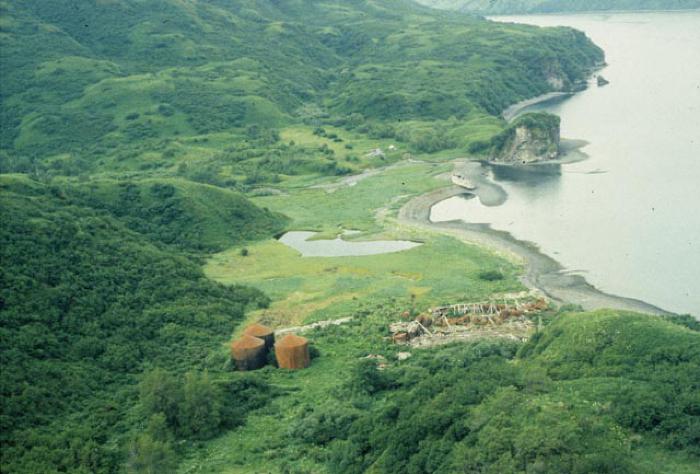Port Hobron — Masriluq

Today the derelict hull of a wooden ship, rusting tanks, and building remnants are all that remain of the whaling station at Port Hobron. Nestled against the shore of Port Hobron Bay, a narrow fjord on the northern coast of Sitkalidak Island, the now-abandoned station was an active commercial enterprise run by the Alaska Whaling Company from 1926 to 1937. The station lies at the mouth of Fugitive Creek, a sheltered spot that provides easy access to the deep waters off eastern Kodiak and the migration path of the Pacific Ocean’s great whales.
From Port Hobron, whalers pursued animals along the eastern coasts of Afognak and Kodiak islands between May and October, intercepting animals as they moved toward summer feeding grounds in the Bering Sea. Whaling focused on blue, fin, humpback, and sperm whales, although right, sei, and grey whales were also taken. The hunt was effective. With sturdy ships and explosive harpoon guns, even large, fast-swimming whales many miles from shore could be harvested. During its eleven years of operation, the station processed more than 2,300 whales.
Alutiiq laborers assisted with the catch. Photographs show that they staffed whaling ships, retrieved dead and wounded animals, and butchered carcasses at the station. Whale meat was salted and packed in barrels and sold for ten cents a pound at Port Hobron. Alutiiq families continued to eat whale steaks and to use whale oil as a dipping sauce for fish and bread into the early twentieth century.
